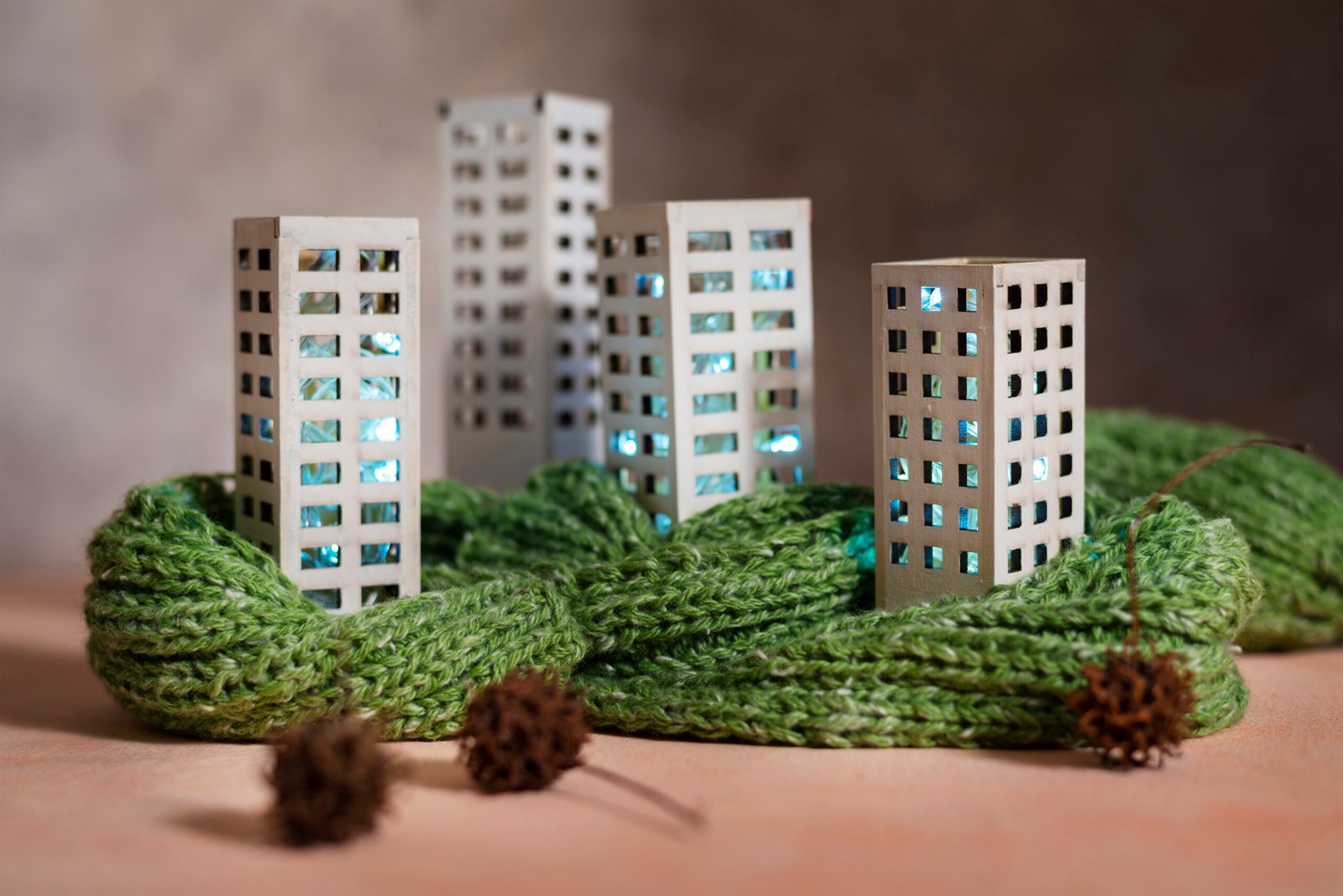This Article will show Real Estate Opportunities in Emerging Suburbs, why Emerging Suburbs are Becoming Hotspots for Real Estate, how Can I Invest in Emerging Suburbs?, how Can I Analyze Whether Emerging Suburbs Are Becoming Suburbs?, how Much Budget Is Suits for It?, and Top Real Estate Opportunities in Emerging Suburbs. Complete step-by-step guide. Include Advantages and Disadvantages with Frequently Asked Questions and Conclusion.
Real Estate Opportunities in Emerging Suburbs
Since the city centers are too congested and costly, attention is now focused on the future suburbs. Those are the fringes of the megacities where amenities are coming up, housing is comparatively reasonable, and future development is sure to flourish. Developers, purchasers, and investors are focusing on these areas for a better yield and appreciation in the future.
Suburbs are the real estate industry’s next “big thing.” They get less hype than other areas, but their price and development path are so strong. Suburbs generally get constant development of roads, better access, and growing demand for housing. When downtown areas get too pricey for the average purchaser, suburbs deliver so desperately needed price/value equilibrium.
Future suburbs are a silver lining for first-generation homebuyers in the Millennial generation, or for growing families who require more space, or for investors who like playing the game of appreciation. They also gain from changes in working habits, i.e., the increase in remote working, for which traveling to urban centers is not a requirement. This lifestyle trend is also making suburban homes a trendy fashion.
The real estate market is changing to adapt to these trends. New transit developments and government incentives, and other types of commercial real estate provide up-and-coming suburbs the potential to be tomorrow’s hot real estate markets. Early investors in these suburbs can experience enormous long-term appreciation, particularly because supply is typically low and demand is constant.
Now let’s dive into the real estate investment opportunities available in the new suburbs, the key most significant advantages, potential disadvantages, and how to identify the most desirable areas for long-term development.
Why Emerging Suburbs are Becoming Hotspots
New suburbs have many reasons why property investors and property buyers have to pay attention to existing hotspots to new suburban hotspots.
Most significantly, price is a factor. Inner city suburbs are getting extremely expensive, particularly for first-home buyers. As a compromise, new suburbs are more entry-level, which is perfect for individuals who would like to get onto the property ladder or broaden their investment options without over-leveraging.
Secondly, the suburbs are likely to be built at the government’s expense. New schools, health centers, roads, and railway lines are usually extended to such suburbs in a bid to make space for the growing population. And thus, the quality of life is highly improved, and more people are drawn to it, and thus the housing demand.
Third, capital appreciation. The more individuals who relocate to the emerging suburbs and the better things get in the location, the higher the price of the homes. The early birds reap the biggest reward later on when the place becomes fashionable.
Other than that, new suburbs will not be as prone to having the type of price fluctuations in an overheated market. Less expensive up-front and building up over the decades, they can provide stability and more gradual growth.
Lastly, the attraction of a less stressful, family-oriented lifestyle is pulling individuals away from the city. With space to breathe in the home, proximity to nature, and family-oriented communities, the new suburbs are the perfect neighborhoods in which to live and make an investment.
How Can I Invest in Emerging Suburbs?
Investing in future suburbs starts with seeing the city landscape of expansion and where the city expansion will occur. These are usually areas at the outskirts of the big city centers with indicators of upgraded infrastructure, increased commercial developments, and increasing population. You start by conducting thorough research on which suburbs are set to be served by public transportation, schools, or business ventures. These will usually be indicators of strategic long-term action by city governments to extend the city boundaries, which in the long term drives up property prices.
Secondly, consider your investment strategy. You can purchase land or house properties to hold onto them for the long term as they appreciate in value. Another option is purchasing fixer-upper homes in such suburbs and renovating them for resale or rental purposes. New suburbs also offer houses for sale at lower prices compared to inner city suburbs, thereby facilitating entry into property using a relatively smaller wallet. Rental yields could also be higher in new areas because of new tenants seeking cheap accommodation.
If you are borrowing to invest, use other monies like home mortgages, real estate investment loans, or home equity loans if you own a home. Banks anticipate expansion in new markets, so there are greater chances of securing a loan. Pre-approval is also recommended so that you know your budget and can make offers confidently.
Due diligence is warranted. Research zoning by-laws, land title, city plans awaiting approval, and development proposals submitted to the local council. Ensure the suburb is properly serviced by utilities, access roads, and that there is no history of environmental issues such as flooding. Interview real estate agents handling these suburbs, and walk or drive suburbs in an attempt to get a feel for the suburbs and how the location functions.
Finally, align your investment horizon with your investment goal. If you are investing for the short term, invest in suburbs with short-term appreciation potential. When you are investing for long-term capital appreciation, buy and hold is the best strategy. Always have potential exit strategies in place in case of a market turn or change in your finances. Long-term suburban investment can be a highly profitable and scalable business if you do it with the right planning and patience.
How Can I Analyze Whether Emerging Suburbs Are Becoming Suburbs?
To know if and when a newly developing suburb is indeed becoming a working suburb, a demographics study, an infrastructure study, and an economic trend analysis need to be combined. Any increase in population is one of the first signs. If ever more individuals are moving into the region, as indicated by census figures or citizen surveys, this is ever more housing demand and ever more services demand, and both cause real estate development. Check real estate websites and council reports for property price history trends and rent over time.
Building infrastructure is also a positive indicator. Look for new or under-construction projects like roads, bridges, hospitals, schools, and mass transit. Governments and builders will not be spending millions of dollars unless they can expect to see a profit along the way, and their profits are most often in the form of higher property values and suburban expansion. Suburbs with those dollars pouring in are soon to experience explosive expansion.
Commercial and retail expansion are also positive signs. A business complex, office complex, or shopping mall opening is usually on the heels of population expansion and is a sign of confidence in the community’s future economic prospects. Pay attention when chains or big-box stores open satellite locations in the community—chains are reluctant to invest in market research before they enter a new market, so their move is a sign of a good future for the community.
Social and community improvements are at work. The presence of gyms, parks, community centers, and cafes is a subtle yet undeniable indicator of gentrification and urban beauty. These improvements make a suburb somewhere that one will want to call home and are an indicator that will bring young professionals, families, and retirees into the area as well.
To complete your analysis, utilize sources such as Google Trends, real estate market reports, the planning commission news, and real estate websites to track changes in supply and demand. Interview some local agents who are plugged in to the neighborhood and go to town hall meetings to find out what plans are in the works. Collecting all of these little pieces of information, you will have a good idea of whether or not a new hot neighborhood is really becoming a profitable suburb.
How Much Budget Is Suits for?
Creating a realistic budget to invest in future suburbs will depend on your economic standing, investment purpose, and the property you wish to invest in. One of the distinctions of investing in future suburbs versus investing in established suburbs or the city proper is that property is relatively cheaper in future suburbs. It does not mean you will not budget. You need to calculate all the expenses you paid—the property’s buying price, taxes, renovation cost, maintenance, insurance, and possible homeowner association fee.
Begin by determining how much you must spend. If you plan to invest the borrowed funds, call your bank or mortgage broker and ask to be pre-approved. This will provide you with a true figure of your borrowing capacity and the price range you may aim for. Most investors start with a goal of $100,000 to $350,000, depending on locality and type of property—residential, land, or commercial.
Don’t forget the hidden expenses. In setting up outer suburbs, infrastructure may be in the pipeline, and as such, you may have to factor in short-term needs such as bore water, road frontage, or temporary power. Premiums can also be charged by the developers on house and land in sought-after parts of the suburb. Don’t forget the possibility of unforeseen repair costs or delays, especially when you buy off-plan or a renovation house.
If you’re thinking of a let, compare the estimated rental yield with your mortgage repayment and upkeep costs. The rule of thumb is to achieve a rental yield of between 5% to 7% on an annual basis. This not just provides cash flow but also financial security as the property appreciates in value in the long term.
You should also hold a contingency budget of 10% to 15% of the property value for any unexpected hitches or opportunities to invest. Having your finances in place to stop any hiccup is sufficient to have a hold period for the asset to notice its value increase substantially. Emergent suburbs are usually long-term investments, and patience is the key.
Finally, the appropriate budget is not overly stretching your funds and does involve some room for maneuvering. Budgeting and living within your means will result in success in this emerging segment of the real estate market.
Top Real Estate Opportunities in Emerging Suburbs
Developing suburbs present a goldmine of opportunity for property investors to gain from early growth and long-term value appreciation. With the growing population in the cities and city centers filling up and becoming costly, suburbs are starting to attract the attention of developers and buyers. Affordability, changing infrastructure, and growing needs for homes make such suburbs most attractive. Investors can buy potential in such markets before others by being visionary and making smart choices, and buying the properties at lower prices and then gaining rapid value appreciation. Regardless of your goal being rental returns, capital appreciation, or development potential, the developing suburbs provide multiple points of entry for multiple classes of investors.
Some of the most lucrative money-making real estate deals to look for in the new suburbs are the following:
1. Affordable Housing Properties
Buying houses early in a life phase also generally entails higher costs than city-centre housing. They are townhouses, duplexes, or single-family houses that could be for first-time households and family building. It is an investment whose value skyrockets years after the suburb is well established. Early rental demand will also generally be there, especially if the location is being marketed as an affordable location in which to live outside the city.
2. Vacant Land or Future Development Sites
Buying unimproved land where spots to develop are being considered also holds the capability to bring enormous profits. The land is also pretty inexpensive relative to improved land and gives you the privilege of selling it for more in the future or turning it into residential or mixed-use structures. It is appropriate for long-term investors who can wait until full realization of the suburb is achieved and can keep holding costs pretty minimal.
3. Multi-Family Investment Properties
Triplexes, duplexes, or small apartment complexes in newly emerging suburban areas are better suited to passive return on income. They appeal to tenants who desire housing outside city congestion. With increasing populations and housing shortages, multi-family homes can generate high utilization and stable cash return with the increased demand as development goes on.
4. Commercial or Retail Spaces
The larger the number of individuals moving to a suburb, the larger the amount of office, service, and store space needed. Purchasing small strip malls, single-owner retail outlets, or mixed-use properties at the beginning of a suburb’s development is highly lucrative. You also lease them to national chains, medical offices, or locally-owned stores expanding into newly opened areas.
5. Fix-and-Flip Opportunities
Among the newer suburbs are foreclosed or older homes that were part of previous settlement waves. The homes are likely undervalued and worth money through rehabilitation. If you are handy at rehabbing or you are comfortable with working with negotiating contractors, rehabbing homes in new subdivisions will bring instant profits before resale prices peak.
6. Build-to-Rent Projects
As the cost of homeownership goes up, homeownership is out of reach for most people in emerging suburbs. If you are an investor, you can buy land and construct houses with the rental market in mind. You can construct houses in a manner that they are optimized for rental appeal, and rental yield in emerging suburbs will be greater than that in mature suburbs.
7. Student Housing near Future School Hubs
If there is off-campus student-specific housing in development, think about investing in student-specific housing. It can be shared housing, apartment-style residence halls, or studio apartment complexes. Student housing is high-turnover but can be high-return if well done.
8. Senior Housing or Retirement Housing
Since the suburbs are growing, the retirement lifestyle communities are also increasing in demand. They offer age-restricted apartments, assisted living communities, or independent retirement communities. They’re drawing increasingly more individuals who desire quiet, affordable, and convenient living just outside the hustle and bustle of city life.
9. Co-Living or Shared Rental Units
When Gen Z and millennial consumers choose affordable housing, co-living towers for multiple residents who also need to share facilities can be a goldmine in new suburbs. They can charge high per-square-foot rents and enjoy high occupancy rates due to flexible lease terms.
10. Short-Term Rental Properties
If the suburb itself is near a business park, hospital, or tourist destination, short-term accommodations like Airbnb apartments are highly profitable. Investing early in the region places you in a position to address future business or travel accommodation needs with fewer members of the competition in front of you, thereby giving you more exposure and return.
Advantages and Disadvantages of Emerging Suburbs
Advantages:
1. Affordability and Reduction in Entry Barriers
You are able to buy property at much lower rates than in city centre locations. This allows more room for potential growth and less room for over-investment.
2. High Growth Potential
Ground-floor investment in future areas is likely to see sensational appreciation as infrastructure development and demand occur.
3. Increased Lifestyle Attraction
With improved infrastructure and increased green living, the suburbs are becoming destinations for more and more people, and that is leading to increasing demand for renting and purchasing.
4. Diversification of Portfolio
Suburban investment provides a diversified real-estate portfolio that can offset risky city-center investments.
5. Less Competition from Institutional Investors
Institutional investors will target established markets, while the new suburbs will be targeted by smaller investors.
Disadvantages:
1. Extended Development Period
Years may pass before another suburb comes up, and the investor must patiently wait for returns to be reaped.
2. Risk of Over-Supply
If the growth is excessive, there is a likelihood of surplus supply relative to demand that lowers rental yields.
3. Limited Amenities to Start With
There are not many shopping centers, hospitals, or schools in early suburbs, and these shape short-term rental attractiveness and house value.
5. Market Uncertainty
There may be new suburbs that will never materialize as predicted in the absence of well-established demand, and hence, property values stagnate.
6. Transportation Issues
Public transport infrastructure may lag behind housing development, perhaps deterring commuters in the short term.
FAQs:
Q1: What is an “emerging suburb”?
An emerging suburb is a fringe suburb of a large city that is growing in population, with new infrastructure built within it, and with rising demand for property.
Q2: How do I identify a high-potential suburb?
Watch for such signs as new transport nodes, elevated real estate inquiries, proposed commercial precincts, and demographic shifts towards young professionals or families.
Q3: Would a rent or resale be more suitable for new suburbs?
Either is fine. Return on rental is easy to forecast as they are affordable, and long-term appreciation has vast potential for resale.
Q4: Do I absolutely need to spend a lot of money to invest in new suburbs?
No. They are usually below the city median and highly affordable for first-time buyers.
Q5: How risky is it to invest in an underdeveloped area?
It’s risky but controlled with research. Invest in areas with approved development plans, government incentives, or historical growth patterns.
Conclusion:
Future suburbs usher in a new age of possibility in the real estate market, particularly for innovative investors looking for bargains as an entry point and long-term value appreciation. Convergence areas are transforming rapidly with infrastructure development, changing lifestyle demands, and urbanization. Investment at such a location with good study and market timing can fetch good returns with portfolio diversification. But patience, sweat, and money management skills are needed. Not all suburbs won’t bloom, so neighborhood trends, government development plans, and population migration will assist in choosing the right location. Whatever your intention is, to build equity, earn rent, or house flip, cities of the future might be the suburbs of today.
References:
- National Association of Realtors – Emerging Market Reports
- CoreLogic Suburb Watchlist
- Urban Land Institute Development Trends
- Property Council of Australia – Suburban Growth Forecast
- REA Insights: Regional & Suburban Growth Analytics









